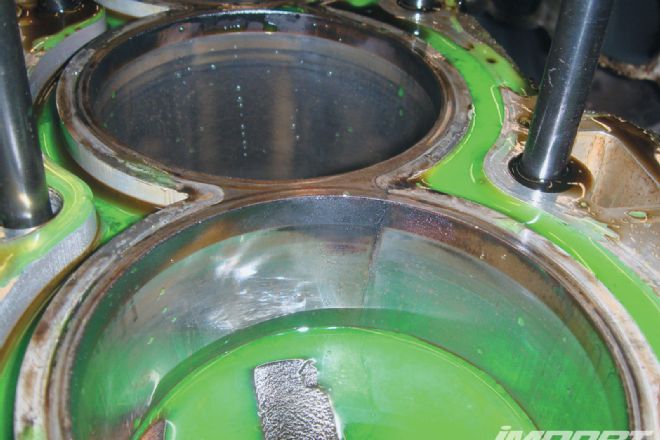Fact: Eric Hsu will be picking his favorite tech question for each installment of Question IT over the next few months, and we'll be hooking up whoever submitted it with some new threads from our go-fast homies at Eat Sleep Race. This month it's Justin White, whose rational engine swapping question (a Question IT first?) garnered a response from Eric other than "Don't do it." Good enough for us.
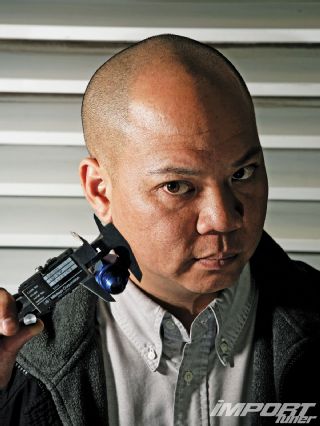 |
Eric HSU
|
Eric HSUwww.beyondthedyno.com/blogs/eric
Send good questions; get free gear. questionit@importtuner.com
This Month's Winning Letter
Open Heart Surgery
I own a '95 Subaru Legacy that I would like to modify and was wondering if I would be able to transplant an EJ25 from a WRX, including the driveline and ECU. Is it really worth doing? I love my Legacy and would also love to do something different than the typical Subaru.
-Justin White, via importtuner.com
If you want your Legacy to have more balls overall, then I'd say it is definitely worth doing. The increase in displacement plus the turbo is going to be the best route for a sizeable power increase. What's more is that the engine and drivetrain bolt right in. However, the ECU from an '06-and-later 2.5L WRX probably won't be happy in your '95 Legacy since it will be looking for the CAN data stream from other computers present in a WRX, such as the ABS, Body Module, Air Bag Module, etc., and will require the throttle pedal assembly from a drive-by-wire Subaru. So if you must stick to a factory ECU, I would recommend:
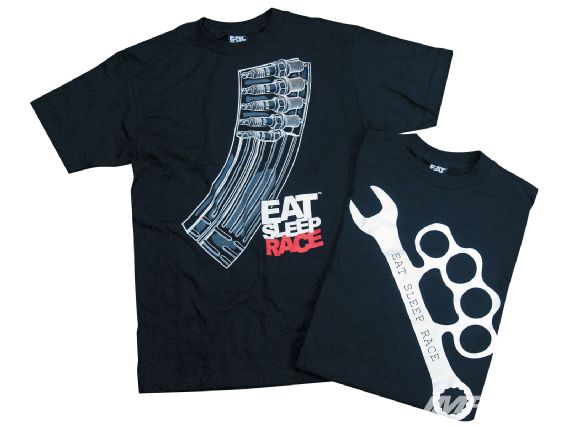 |
Engine Swaps, Hyundai Genesis R, and More - Question It
|
Engine Swaps, Hyundai Genesis R, and More - Question It
1. An EJ255 from an '06-07 WRX, an ECU and engine harness from an '01-04 JDM STI that runs the AVCS variable intake cam, and an '02-04 WRX throttle body because the JDM ECU uses a cable throttle body, making your life substantially easier in the compatibility department. Since you aren't using a drive-by-wire ECU and throttle body, you will not need to install a throttle pedal assembly with a position sensor. You will, however, need to run a JDM intake camshaft in the engine since the cam triggers are different.
2. If you can live without the AVCS, then get yourself a 2.5L short block, a pair of good condition '02-04 2.0L WRX cylinder heads and cams, and a Cosworth 1.5mm EJ25 head gasket, and then use an '02-04 WRX ECU and engine harness. This method is going to be cheaper overall and less hassle, but you won't have the benefit of AVCS, which can offer substantial increases in mid-range power. But still, a turbo 2.5L is still a massive increase in power over your existing configuration.
Either way, you'll need to do something about the hoodscoop for the top-mount intercooler, or you can have a front-mount intercooler built for even better performance. I might suggest also finding yourself a set of '04-05 STI Brembos for increased braking performance.
Strict Diet Plan
I own a '91 MR2 Turbo that I want to put on a diet. What can I do to reduce weight? Also, do you know where can I find tubular aluminum control arms, a lightweight under brace, and other parts that I can improve the vehicle's handing with while saving additional weight?
-Diego Gonzalez, via importuner.com
Before going ape shit on your MR2 attempting to lower its curb weight, you'll want to figure out exactly how you plan on using the car and take into consideration the climate you live in. Are you unfortunate enough to live anywhere outside of Southern California? Because if you do, you'll definitely want a heater and most likely air conditioning. Dropping those systems' combined 20 to 30 pounds from the car may not be worth the potentially intense suffering from the weather. On the other hand, if the car will be used only on a track then you should go balls out on the diet. If so, also take the bumper reinforcements off for some extra weight savings. Tearing the interior apart isn't going to be worth much in the MR2 since there is already very little there. If you are planning to strip the car down to the chassis and start from the ground up, you can remove the sound deadening material and undercoating, which might be worth 20 pounds combined. I'm sure there are companies that make FRP (fiberglass reinforced plastic) panels in Japan, but they aren't going to be cheap. The ricer-spec wet lay-up carbon panels offered in the U.S. probably aren't much lighter than your OEM panels. I'd recommend checking with Cusco and More Japan (www.morejapan.com) for any chassis stiffening braces and subframe connectors. For the suspension, you should reconsider using aluminum for the control arms and tie rods because aluminum generally isn't durable enough to handle the abuse. We recommend you visit the More Japan website and purchase Nagisa Auto arms and links. More Japan has the bat line to Nagisa Auto and their prices are very reasonable if you take the exchange rate into account.
K-Power
I own an '02 Civic Si (K20A3), and I'm looking for a little more power while maintaining reliability. I've been told it's possible to put a K20A2 head on the K20A3 block, but I would have to get the stock cams that come with the K20A2 head or a set of aftermarket ones. I'm also in the process of saving up cash for a Hondata K-Pro that should offer bigger horsepower gains than just a reflash. Is it worth taking the time to find and install a K20A2 head or should I just go with a K-Pro? I'm just looking for a little more horsepower to piss off these young punks running around in their new Mustangs that daddy bought them.
-Matt M., via importtuner.com
Unfortunately, it isn't a simple swap to convert to an A2 head. Even after you get the head and cams onto your A3 block, you'll need the solenoids to control the variable angle cams, wiring to the ECU for the solenoids, and an ECU capable of controlling the cams, which your factory ECU is not. You would be better off finding a complete A2 engine, harness, and ECU and then swapping it all over to your Civic. Aside from the slightly different water passages in the cylinder head, the A3 also has a smaller oil pump rotor, no piston cooling jets, and a five-speed transmission with longer gearing because of its lower performance target. If you've got more time than money, you can probably try the head swap, but I think you'll be better off buying a complete A2 swap (engine, transmission, ECU, and harness) and selling off your original parts.
Plan B
I'm a huge fan of EVOs and STIs and dream about owning either one someday. However, the new Hyundai Genesis R Spec seems like a pretty decent car for the money and it seems to be getting a good amount of attention from the automotive community. So my question is: If I wanted one of these cars as a daily driver, which should I buy? I could get a new Genesis with a warranty for as much, if not less than, the price of a used EVO 9 or an '06-07 STI. Big horsepower and torque is not much of a concern because it would only be a daily driver with basic bolt-ons to improve both hp and torque as well as improve my gas mileage.
-Eddie Kobziak, via importtuner.com
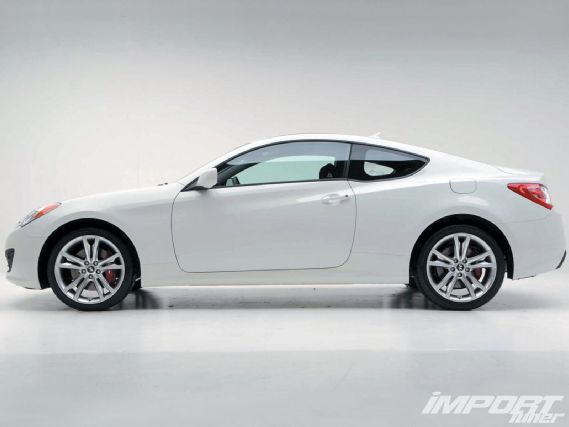 |
Engine Swaps, Hyundai Genesis R, and More - Question It
|
Engine Swaps, Hyundai Genesis R, and More - Question It
The Hyundai Genesis R Spec is a great car and it looks fresh since it hasn't been around since 2002, like the EVO and STI. The fact that it is rear-wheel drive is also appealing if that's what you're looking for (i.e., going sideways). The Genesis R also destroys both the EVO and STI in the gas mileage department, which is a huge plus on the street, but the answer would really depend on how crazy you plan on getting with the modifications. I would keep an STI's stock engine at the 400hp level, tops, and I would be comfortable running an EVO's stock engine to 450 hp. The Genesis' 2.0L Theta engine is pretty good, but it really isn't a performance engine like those in the EVO and STI. Having studied the engine's internals but not having tuned one myself, I've seen first-hand that while the components are good they aren't really performance oriented. Keep in mind that the Genesis 2.0L is actually beneath the 3.8L in the Genesis food chain. With lower performance targets, the factory did not really design the 2.0L for heavy-duty usage like the EVO and STI designers did. The Genesis makes 205 hp while the EVO and STI make 300 hp. I believe a used EVO 8/9 or STI will get you more bang for your buck right off the bat due to the performance oriented suspension, engine and turbo sizing, and traction advantages from AWD. Remember that the EVO and STI are factory hot rod performance specials so their suspension, brakes, and engines are designed to perform really well right out of the box. This also means that the EVO and STI are better foundations to start modifying. But then again, the Genesis is rear-wheel drive.
Junkyard Wars
I own an '00 Civic Si that I bought a B20 block for (just the block with no internals) from an acquaintance and on top of it he also gave me an additional blown B20 block. So pretty much I have two B20 blocks, a good one and a cracked one. Needless to say I purchased a set of 0.50mm oversized pistons and Eagle rods to begin my build, but have a few questions. 1.) Can I install the crankshaft from the cracked B20 block into the salvageable B20? 2.) Are there any parts you suggest I need to complete the installation of the crankshaft from one block to the other?
-Pnut, via importtuner.com
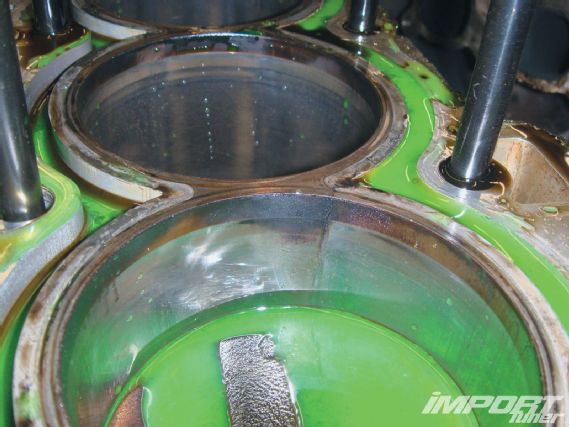 |
Engine Swaps, Hyundai Genesis R, and More - Question It
|
Engine Swaps, Hyundai Genesis R, and More - Question It
1. Assuming the crankshaft is in good shape, you should be able to reuse it in the good B20 block. You'll want to spend some extra time cleaning it to ensure no debris from the cracked block gets into your new engine.
2. You'll also want to make sure that you have enough bearing oil clearance for the new crank, block, and rods, so I would recommend going to your local parts store and getting some green Plastigauge. The proper way to measure oil clearance would be to use a dial bore gauge and a micrometer, but if you're asking me this question at all, just go get some Plastigauge. You could follow the factory alphanumeric block and crank grading for the mains, but since this is a performance engine, you'll want to use performance oil clearances to ensure you have enough oil film strength. Every engine builder has his own preferences, but as a starting point I would target the maximum of the recommended factory oil clearance. For example, if the factory rod bearing clearance is 0.0008-.0014 inch, then shoot for 0.0014 inch. Factory bearings come in different thicknesses and you can mix and match half shells to attain the desired oil clearance.
2JZ vs. RB26
This is my second 240SX ('89 model); my previous 240SX with a turbocharged KA24DE blew up. Now with my current 240, I was prepared to do an RB26 swap, and then I started reading up on the 2JZ swap. So far there are two companies-www.2jzswap.com and www.myjzswap.com-that manufacture install kits and sell parts. I'm having a hard time deciding which engine to use. The 2JZ swap would be great because the turbo is located on the passenger side so I won't have to worry about the downpipe clearance, and it's smog-able if you have the USDM emissions equipment on the motor. The RB is not smog-able unless you know someone, and they're few and far between, because the Skyline was never released in the U.S. The 2JZ powerband is what I don't like. It seems like a torque machine, but only from 3K to 6.5K rpm. I like the RB because of the response and the higher revving nature of the short-stroke engine. What are your opinions of both swaps? I might just have to buy another 240 and swap both in! BTW, this is my daily driver, with some time-attack events planned in the near future.
-Brandon, via importtuner.com
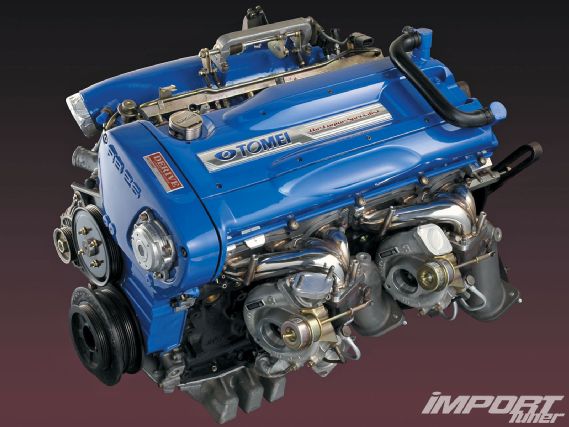 |
Engine Swaps, Hyundai Genesis R, and More - Question It
|
Engine Swaps, Hyundai Genesis R, and More - Question It
The short answer would be neither. Use a Nissan VQ35. It is shorter than a KA24 or SR20, which offers superior weight distribution, it is almost 100 pounds lighter than a 2JZ, and it offers 3.5 liters of displacement, which is larger than either the 2JZ or RB26. Unfortunately, the VQ doesn't come from the factory with turbos, but that can be fixed pretty quickly with the multitude of turbo kits on the market. I seem to remember the Turbonetics single-turbo kit fitting in an S14 240SX with some modifications, as an example. The RB26 is one of my favorite engines, but I don't believe the RB belongs in anything but a Skyline. It is ridiculously long, heavy, and difficult to work on, sometimes difficult to get parts for, and will quickly ruin the balance of any Nissan S-chassis. The Skyline platforms were designed with these characteristics in mind. It's pretty much the same deal with the 2JZ and the Supra with the exception of parts being available at any U.S. Toyota dealership. Also, take into account that a 2JZ with a pair of camshafts dialed in correctly by a professional tuner and a good-sized turbo will easily make power to 8,000 rpm. So if you plan on doing any kind of road racing in the future, a cast-iron inline-six would probably be the dumbest engine to put in the front of your S13.
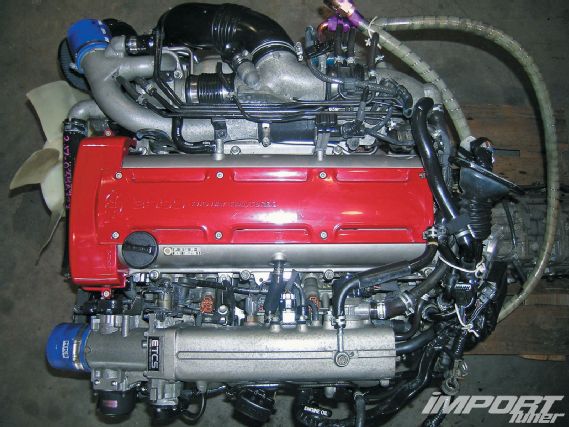 |
Engine Swaps, Hyundai Genesis R, and More - Question It
|
Engine Swaps, Hyundai Genesis R, and More - Question It

